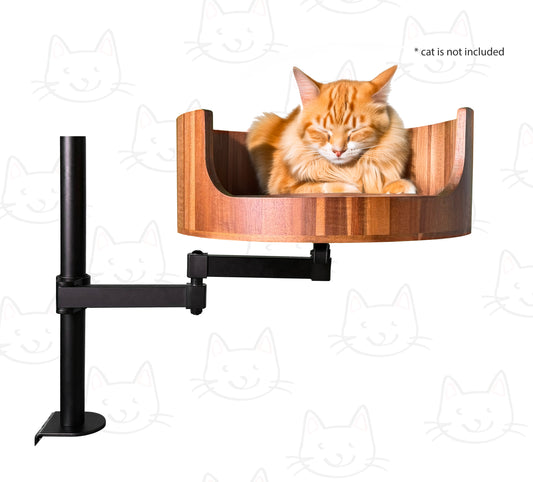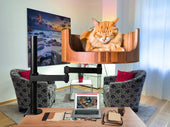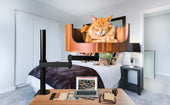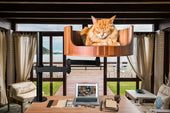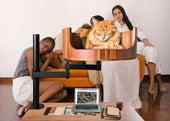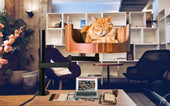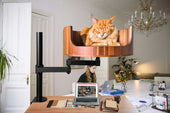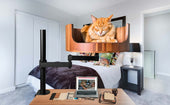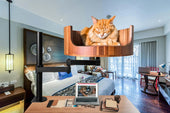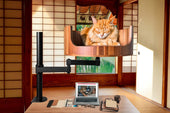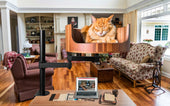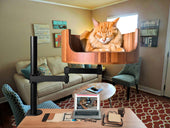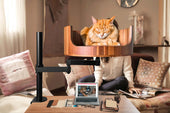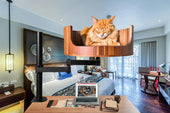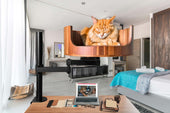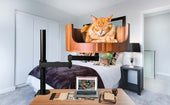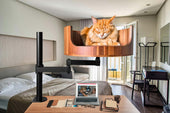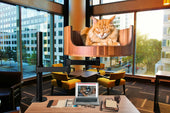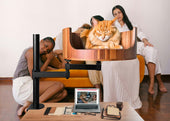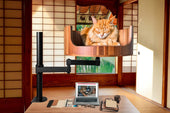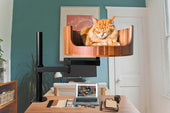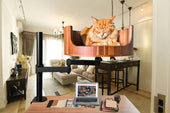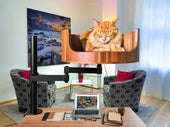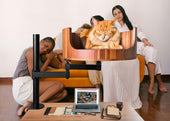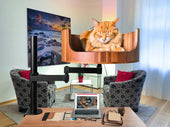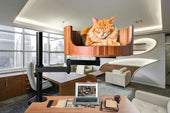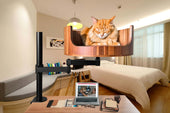
Yelled at Cat: Understanding Feline Behavior and Emotions
Share
Have you ever found yourself yelling at your cat in frustration, only to be met with a confused stare or a swift departure? Understanding feline behavior and emotions can be a complex and often misunderstood subject, but with the right knowledge, you can build a stronger bond with your furry companion. Desk Cat Nest is here to provide insight into the world of cats, their behaviors, and how you can better communicate with them.
In this article, we will explore the reasons behind why cats may exhibit certain behaviors, such as avoidance, aggression, or vocalization. By delving into the emotions and instincts that drive these behaviors, we can gain a deeper understanding of our feline friends and learn how to properly respond to their needs. We will also discuss practical tips and strategies for effectively communicating with your cat, including positive reinforcement, environmental enrichment, and stress management techniques. By the end of this article, you will have a better grasp of your cat's behavior and emotions, leading to a more harmonious relationship between you and your furry friend.
1. Cats communicate through various vocalizations, body language, and behaviors – yelling at a cat may not be an effective form of communication.
2. Understanding a cat's natural behaviors and emotions can help improve the bond between owners and their feline companions.
3. Creating a comfortable and safe space, such as a desk cat nest, can provide cats with a sense of security and relaxation.
4. Cats may exhibit certain behaviors when feeling stressed, anxious, or unwell – it is important for owners to recognize and address these signs promptly.
5. By observing and respecting a cat's boundaries and preferences, owners can foster a positive and enriching environment for their furry friends.
Understanding Feline Behavior
Understanding feline behavior is essential for cat owners to create a harmonious relationship with their pets. Cats communicate through body language, vocalizations, and actions. They may purr when they are content, hiss when they are frightened or angry, and meow for attention. It is vital to pay attention to these cues to understand what your cat is feeling or trying to communicate.
Types of Cat Yelling
There are various reasons why a cat may start yelling or meowing loudly. Some common types of cat yelling include hunger, thirst, loneliness, boredom, attention-seeking behavior, or even pain. It is crucial for cat owners to pay attention to the context in which their cat is yelling to determine the underlying cause and address it accordingly. For example, a cat that is yelling because it is hungry may be satisfied with a bowl of food, while a cat that is yelling due to boredom may benefit from interactive toys or playtime.
Responding to Cat Yelling
When a cat starts yelling, it is essential for cat owners to remain patient and calm. Yelling back at the cat or punishing it may only escalate the situation and create a negative experience for both the cat and the owner. Instead, try to determine the underlying cause of the yelling and address it appropriately. For example, if your cat is yelling for attention, try to spend some quality time with it or engage in interactive play to satisfy its needs.
Seeking Professional Help
If your cat's yelling behavior persists despite your best efforts to address it, it may be helpful to seek professional help from a veterinarian or animal behaviorist. They can conduct a thorough assessment of your cat's behavior and provide guidance on how to modify it effectively. In some cases, underlying medical conditions may be causing the yelling behavior, which would require medical treatment. It is crucial to prioritize your cat's well-being and seek professional help when needed.
## Frequently Asked Questions
### How can the Desk Cat Nest help with a yelled at cat?
The Desk Cat Nest provides a cozy and comfortable space for your cat to retreat to when feeling stressed or anxious. By offering a designated safe space, it can help reduce the likelihood of your cat acting out or being yelled at.
### Is the Desk Cat Nest easy to clean?
Yes, the Desk Cat Nest is made with removable and washable materials, making it easy to clean and maintain. Simply unzip the cover and toss it in the washing machine to keep it looking fresh and clean.
### Will my cat actually use the Desk Cat Nest?
While every cat is different, many cats enjoy having their own personal space to lounge and nap in. By placing the Desk Cat Nest in a quiet and secluded area, your cat is more likely to gravitate towards it as a safe space.
### How big is the Desk Cat Nest?
The Desk Cat Nest is designed to fit most standard desks and measures XX inches in diameter. It is spacious enough to accommodate cats of all sizes and breeds comfortably.
### Can the Desk Cat Nest be used for kittens or older cats?
Yes, the Desk Cat Nest is suitable for cats of all ages. Kittens may find the enclosed space comforting, while older cats may appreciate the warmth and security of the nest.
In conclusion, the Desk Cat Bed is a valuable choice for a yelled at cat as it provides a cozy and secure space for them to retreat to when feeling overwhelmed or anxious. This innovative design not only offers comfort and privacy but also helps to reduce stress and promote relaxation for your furry friend. With the Desk Cat Bed, you can rest assured that your pet will have a safe and comfortable sanctuary to escape to whenever they need it.

